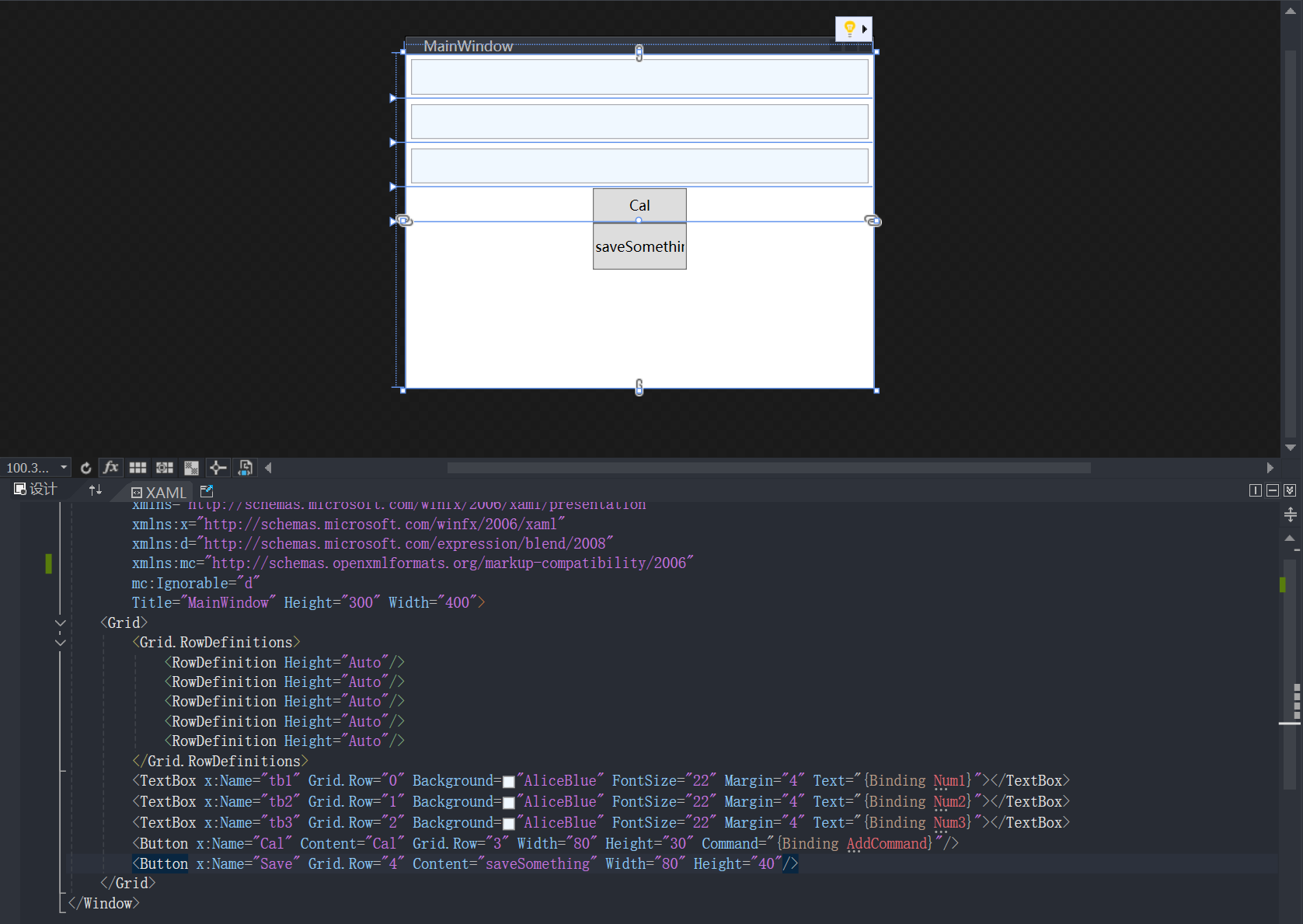深入浅出WPF示例, 理解Binding实现
示例
功能: 实现按钮计算更新TextBox数据

数据属性NotificationObject
当属性被赋值时调用RaisePropertyChanged触发PropertyChanged
1
2
3
4
5
6
7
8
9
| public class NotificationObject : INotifyPropertyChanged
{
public event PropertyChangedEventHandler PropertyChanged;
public void RaisePropertyChanged(string propertyName)
{
PropertyChanged?.Invoke(this, new PropertyChangedEventArgs(propertyName));
}
}
|
命令属性DelegateCommand
View中按钮按下等触发命令后执行Execute
1
2
3
4
5
6
7
8
9
10
11
12
13
14
15
16
17
18
19
20
21
22
| public class DelegateCommand : ICommand
{
public event EventHandler CanExecuteChanged;
public bool CanExecute(object parameter)
{
if(CanExcuteFunc == null)
return true;
return CanExcuteFunc(parameter);
}
public void Execute(object parameter)
{
if (ExecuteAction == null)
return;
ExecuteAction(parameter);
}
public Action<object> ExecuteAction { get; set; }
public Func<object, bool> CanExcuteFunc { get; set; }
}
|
MainWindowViewModel
示例中Cal``Button按下后触发执行CanExecute若返回true则执行Execute, 在构造中添加ExecuteAction执行方法
1
2
3
4
5
6
7
8
9
10
11
12
13
14
15
16
17
18
19
20
21
22
23
24
25
26
27
28
29
30
31
32
33
34
35
36
37
38
39
40
41
42
43
44
45
46
47
48
49
50
51
52
| public class MainWindowViewModel : NotificationObject
{
private double num1;
public double Num1
{
get { return num1; }
set
{
num1 = value;
RaisePropertyChanged(nameof(Num1));
}
}
private double num2;
public double Num2
{
get { return num2++; }
set
{
num2 = value;
RaisePropertyChanged(nameof(Num2));
}
}
private double num3;
public double Num3
{
get { return num3; }
set
{
num3 = value;
RaisePropertyChanged(nameof(Num3));
}
}
public DelegateCommand AddCommand { get; set; }
void Add(object param)
{
Num3 = Num1 + Num2;
}
public MainWindowViewModel()
{
AddCommand = new DelegateCommand
{
ExecuteAction = Add
};
}
}
|
数据层DataContext
DataContext = new MainWindowViewModel();
指定Banding上下文即业务逻辑
如上述示例 Banding绑定的是MainWindowViewModel类里的属性名
DataContext设置方法
1. 初始化时添加
1
2
3
4
5
| public MainWindow()
{
InitializeComponent();
this.DataContext = new MainWindowViewModel();
}
|
2. xaml中d:DataContext指定
1
2
| xmlns:viewmodel="clr-namespace:LearnWpf.ViewModel"
d:DataContext="{d:DesignInstance Type=viewmodel:MainWindowViewModel}"
|
3. xaml中添加
1
2
3
| <Window.DataContext>
<viewmodel:MainWindowViewModel/>
</Window.DataContext>
|
Banding DataContext说明
1
2
3
4
5
6
7
8
9
10
11
12
13
14
15
16
17
|
<Window x:Name="MyWindow">
<StackPanel>
<Label Content="{Binding Name}"/>
<StackPanel DataContext="{Binding ClassB}">
<Label Content="{Binding Name}"/>
<Label Content="{Binding ElementName=MyWindow, Path=DataContext.Name}"/>
</StackPanel>
<Label Content="{Binding ClassB.Name}"/>
</StackPanel>
</Window>
|
